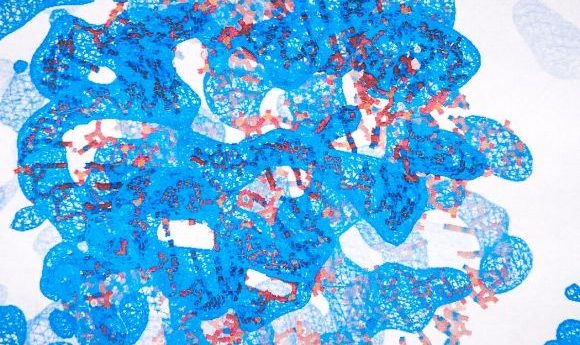Investigating the underlying mechanisms of RNA splicing

A $1.6million grant from the National Institute of Health (MD, USA) has been awarded to study the underlying biochemistry and crystallography of RNA splicing using bacteria from hot springs.
Roughly 70% of the human genome is made up of noncoding “junk DNA”. This is removed from pre-mRNA before RNA is translated into a protein through the process of RNA splicing. Although this process is well known, relatively little is known about how it actually works.
Researchers from West Virginia University (WV, USA) have recently been awarded a $1.6million grant from The National Institutes of Health (MD, USA) to study the underlying mechanisms of RNA splicing and gain a better understanding of how the process is catalyzed.
“Within your cells, DNA is your master copy. It’s transcribed to a working blueprint of RNA, and then RNA is used as instructions to make proteins,” explained project lead Aaron Robart. “The only problem is, the instructions are somewhat scrambled. Exons are bits of RNA that read as instructions to make proteins. However, they’re frequently interrupted by noncoding introns.”
- HPV-RNA Seq: a powerful diagnostic technique for cervical cancer?
- BORIS: a new target for neuroblastoma
- Electrochemically active bacteria: amping up the excitement
The process of RNA splicing is carried out by an elaborate molecular machine called the spliceosome. This is a complicated structure that involves many different RNAs and hundreds of different proteins to function.
The project is planned to span 5 years and will involve using a heat-loving bacterial species found in hot springs. This species is an advantageous model as it produces highly active and stable enzymes involved in splicing and reconfiguring RNA.
“We spent about a year and a half testing dozens of different examples to find a few species that had proteins that were amendable to purification from overexpression systems at high levels, because we need a lot of protein to try to do crystallization,” Robart remarked. “We’ve uncovered one of the most active enzymes in this class, from a thermophilic bacteria that thrive in hot springs.”
The aim of the project is to cultivate and isolate proteins and RNA from these bacteria in large enough volumes that the researchers are able to understand the biochemical processes that occur inside cells during the process of RNA splicing.
Using the Argonne National Laboratory’s (IL, USA) Advanced Photon Source, the researchers intend to apply ultra-bright, high-energy X-rays to the crystalized molecules to produce detailed images of the process and glean information on the underlying molecular mechanisms.
As well as understanding how the spliceosome excises the “junk DNA”, the study should provide an insight into the process of retrotransposition, where the DNA is inserted elsewhere in the genome. It is this process that can often result in disease-causing mutations.
The findings from this research may shed light on disorders known to be linked to changes in gene expression, such as diabetes and cancer. Uncovering this information could be the first step in developing new RNA-based therapeutics for these diseases.
“We’re trying to understand the fundamentals. You can’t try to fix something until you understand how it works,” Robart concluded.